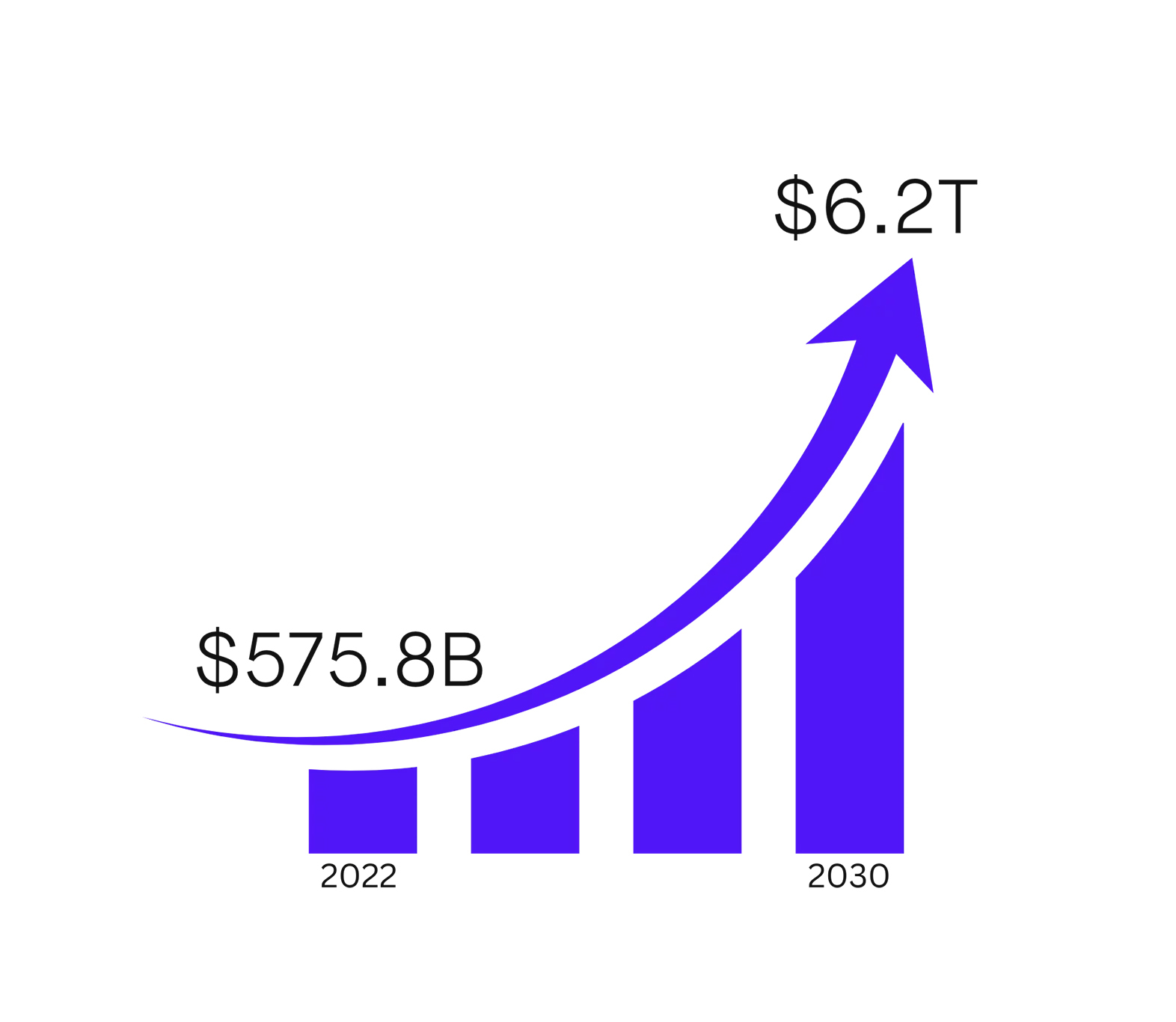E-commerce trends 2023: Amazon is in
Hybrid commerce: Blurring the line
between virtual and physical
Hybrid shopping is about combining the best of both worlds – online and offline – to create a shopping experience that satisfies all the customer’s needs.
Online shopping offers major convenience because it can be done from anywhere and at any time, making almost everything available to shoppers from the comfort of their own homes.
At the same time, offline shopping provides a tactile experience: looking, feeling or trying an item on before buying it. In 2023, combining these two experiences will be a key strategy for retailers looking to continue building brand awareness and customer loyalty.
Offline retailers can leverage innovations introduced by online retailers in logistics and inventory management. This includes flexible payment features, home delivery options, and loyalty programs (such as Amazon’s Style stores).
On the other hand, online retailers can also learn from the experience of physical businesses in building personal relationships with customers and providing immersive shopping experiences.
Amazon, as usual, is already a step ahead. It is now possible for brands to bring their online campaigns into stores. Amazon has opened the opportunity to programmatically run ads on physical store digital signage through Amazon DSP. This will allow customers to see or interact with a brand in a physical environment at the time of purchase.
Access to physical store signage used to be available only through sponsorship, but now brands can programmatically promote products in physical Amazon stores. This will result in more brand discoveries and enhance the overall customer experience.

Social commerce:
Trusting influencers
The future of sales and shopping is social.
As consumers are now shopping directly on their social media feeds, these platforms are gaining a significant share of the e-commerce market. Social commerce allows social media platforms to act as virtual storefronts for brands, and the purchases can take place directly, without shoppers needing any redirection. The global social commerce market is expected to grow at a compound annual growth rate of 30.2% from 2022 to 2030, reaching $6.2 trillion by 2030.
With that being said, Amazon is currently beta-testing Amazon Posts, giving sellers the ability to post social media content directly on Amazon. This feature allows registered sellers to share unique lifestyle images and product-related content through a “feed” that looks similar to other social media platforms. Shoppers will be able to scroll through the feed and go directly to product detail pages.
The program is designed to not only show shoppers how to use the brand’s products but also to encourage them to browse and learn about the brand’s story. In addition, by using Posts, brands can easily maintain their brand identity on other social platforms by redirecting content from Instagram and Facebook posts to their Amazon feed.
Of course, where there are social media, there are influencers. Influencer commerce offers influencers to sell products or services on their channel, not just redirect traffic to a brand page.
Almost all social media platforms, such as Pinterest, Instagram, YouTube, and TikTok, allow influencers to integrate product offerings from partner brands into their posts, and their millions of followers can buy a product by directly clicking on the original post. Influencers serve as almost quasi-sales people that have an already established and trusting relationship with their followers.
Accordingly, Amazon has rolled out its own Amazon influencer program, which allows influencers to sign up, promote products, and get paid for it. It works as an extension of the Amazon Associates (affiliate) program, where product-related content from influencers goes to Amazon and helps shoppers explore relevant products. Influencers, in turn, can earn affiliate commissions from Amazon for qualifying purchases. With the constant growth of social platforms and interaction demand, this trend seems to be the one that will definitely shape the future of e-commerce in the coming year.
Live commerce: Becoming closer
In addition to Influencers, another e-commerce trend bringing brands closer to their customers is live commerce.
Live commerce combines interactive video with online buying and selling capabilities, allowing shoppers to purchase products live, without taking their eyes off the broadcast. By combining online retail with live streaming, today’s companies are making the process of shopping online a much more personal experience.
Amazon currently is expanding its live shopping capabilities by offering Amazon Live. It basically allows sellers to promote their products by doing their own live streaming for customers directly on Amazon. Brands can provide reviews and demos to introduce customers to the products available in their Amazon shop. Merchants can bring products to life by presenting them in a product carousel and with features such as product highlighting, live promotions and interactive chat to interact with their audience during broadcasts.
Conversational commerce: The
power of voice
Conversational commerce has become mainstream as consumers become accustomed to using chatbots and digital assistants as part of their online shopping experience. Conversational commerce allows consumers to interact with brands and make purchases through messaging apps such as WhatsApp, Telegram, and Facebook messenger, or voice assistants such as Google Home and Alexa. Consumers can not only chat to get customer support and product information, but they can also shop through these channels.
Conversational commerce with an AI recommendation engine can empower e-commerce brands and provide a personalised shopping experience. Voice search, which allows users to search for questions or submit commands online just by speaking, has seen explosive growth over the past few years. Advances in artificial intelligence and machine learning have contributed to this rapid growth. For example, Google search statistics show that in 2013 artificial intelligence recognized 77% of spoken words, while today that figure is 97%.
It goes without saying that voice search is likely to become one of the shopping norms in the future. Amazon, for example, already uses voice search services for customers to easily buy products.
Over the next few years, we can also expect Amazon to improve its voice search in a number of ways:
- Access from more devices produced by Amazon
- Higher-quality interactions for better recommendations
- Integration into other artificial intelligence devices
Promotional commerce: Ads disrupt
Despite the fact that technology such as artificial intelligence continues to develop, people still remain at the centre of commerce. The main trend that unites all the aforementioned ones is certainly advertising innovations that focus on people’s preferences and needs.
We expect to see a lot more interaction in the coming year with the Amazon Marketing Cloud. It offers an analytics solution that analyzes and understands the customer journey and helps advertisers with campaign measurement, audience analysis, and media optimization. Features that are extremely attractive when the goal is to build a strong and efficient strategy.
Amazon Ads, a solution that quickly provides analysis and results on the effectiveness of your ads, has proven to be an indispensable investment for all sellers. However, it has been evolving extremely in the past year and is worth exploring the new possibilities within it, including video advertising on Amazon.
At UnBoxed 2022, for example, Amazon Ads announced that it is adding video to its self-service Sponsored Display solution. This allows advertisers from around the world to easily create video campaigns in order to showcase their products and stories to millions of customers on Amazon and other online retailers. In addition, Video Builder, which makes it easy for brands to create videos for Sponsored Brands and Sponsored Display campaigns with customizable templates, is in beta testing now. Using available images, advertisers can easily create videos in less than 10 minutes at no extra cost.
Last but not least from new video advertising offerings, Amazon creative services (currently also in beta-testing). This product is now available in eight countries and helps advertisers find, compare, and directly contract with proven service providers to create effective Sponsored Brands, Streaming TV, and Sponsored Display videos. Brands can search and filter services based on their requirements, view reviews and samples, and connect directly with vendors for end-to-end creative delivery, all in the Amazon Advertising Console.
Plan your 2023 e-commerce strategy
Remember: consumers are in the driver’s seat and e-commerce businesses are adapting strategies to suit them. But whatever e-commerce trend you decide to prioritize, do it specifically with the goal of improving the shopping experience for your customers and building long-term relationships with them.
The industry is constantly changing, which means it is the responsibility of e-commerce business owners to always monitor emerging trends. They need to look for ways to use new tools and advanced technologies as quickly as possible – and being one of the first to do so is a major benefit.
We are always one step ahead and ready to help you implement all the innovations first. After all, being the first to try out these trends gives you an advantage that can take your business to a whole other level – a customer’s recurring selection of an innovator among lagging competitors.
Insights
View all insightsQuestions?
Partner




